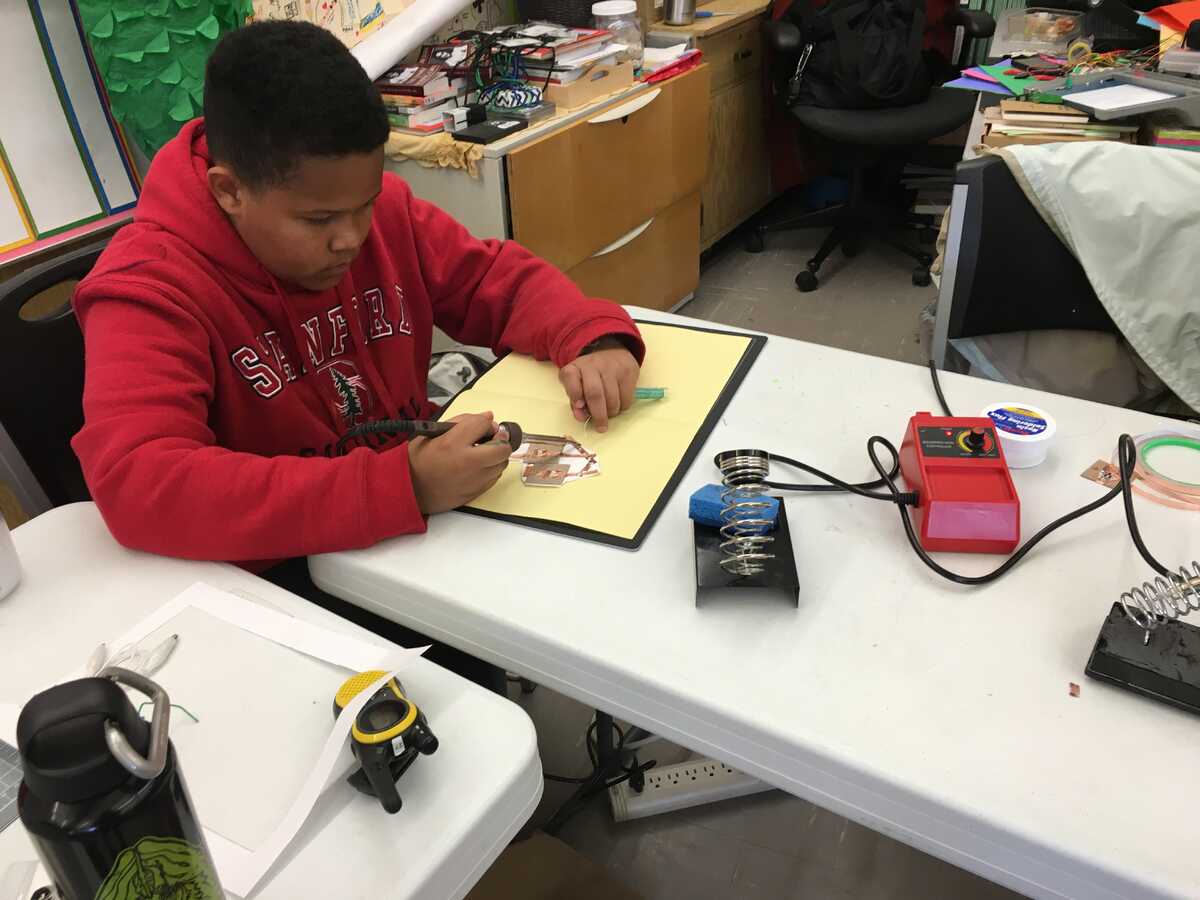Hi there!
Paper Circuitry & Design Process Workshop
Feb 1 - 8, 2016
East Bay Innovation Academy
Goals:
⁃ Getting kids engaged in paper craft and circuitry through paper electronics
⁃ Teaching design process through a paper circuitry project.
Paper circuitry is an interesting medium to think with both educationally and media-platform-wise. Unfortunately, the workshop didn’t make good use of the themes of design notebooks and paper circuitry, and instead separated the two, oddly enough. I would have loved a project which encouraged the students to blend paper, pen, and circuitry mediums more seamlessly, using the design notebook as a research journal of their discoveries as they learn about circuitry and electronics. I would have loved to bring in a bunch of old paperbacks and meld the mediums together. But that might be more of a personal, selfish interest. :) Either way, I think this week definitely gave me a lingering feel for the materiality of paper electronics.
The following are clips of my teaching reflections at EBIA.
Observations:
Clip #1
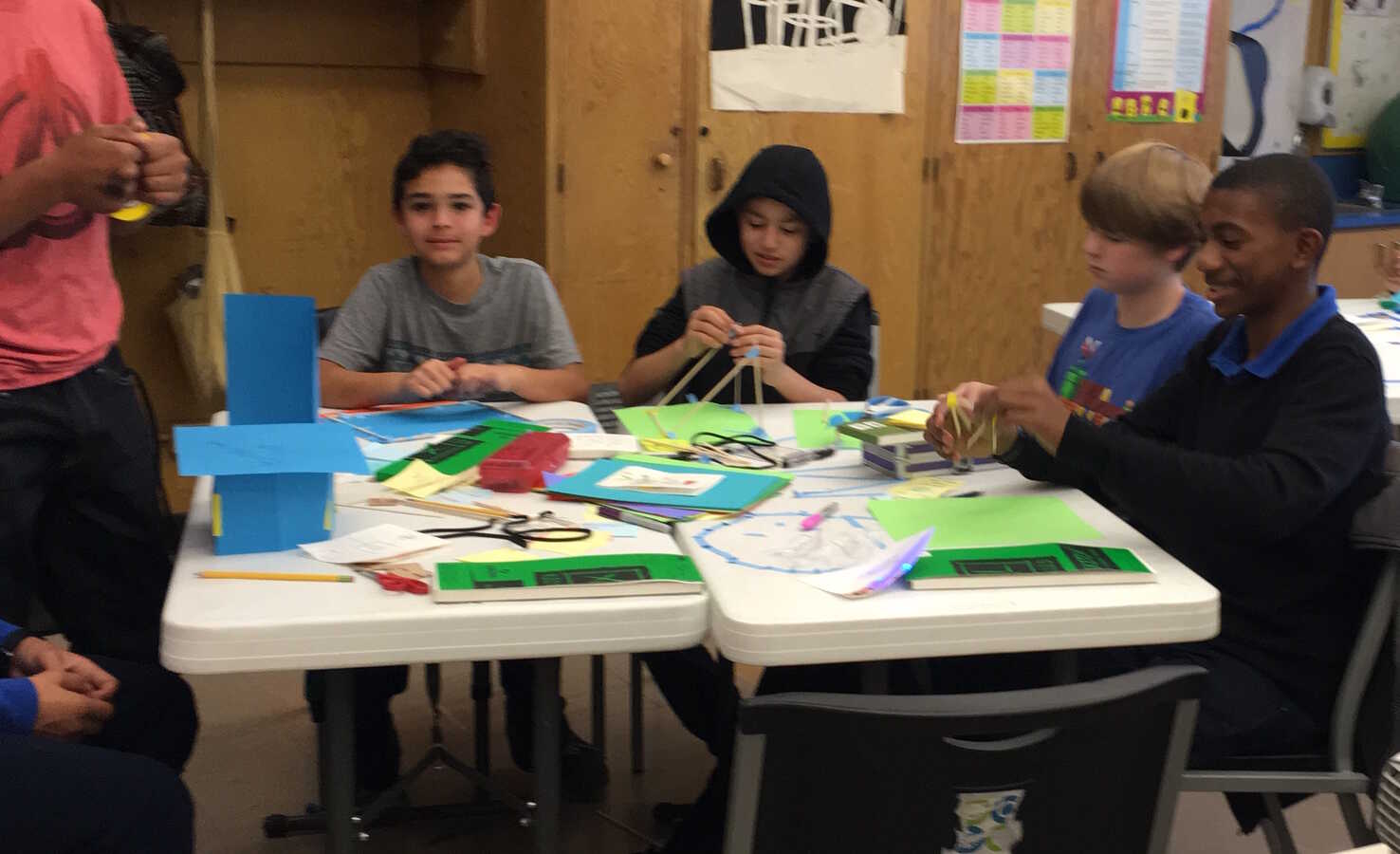
The kids were working on a group activity. Some of them were collaborating well, others found it a good time to sit back and watch one team member do all the work. Ivan (6th grade) was an example of one of those students. In the picture, he’s the one who’s caught me snapping the photo.
Ivan: “I’m booOOOred.”
Me: “Why?”
Ivan: “… I dunno.”
Me: “Well, you could help Jonathan. You can draw, add color to the piece, or build the circuit.”
Ivan: “… I dunno.”
Ivan: “… I’m bOOOOOoored!”
Me: “Ha, so what do you want to do?”
Ivan: “I want to go home and SLEEP!”
At that point, I chuckled and sighed, told him he could do that in a few hours, and that that’s what I’d do in a few hours too, and got up to help another student.
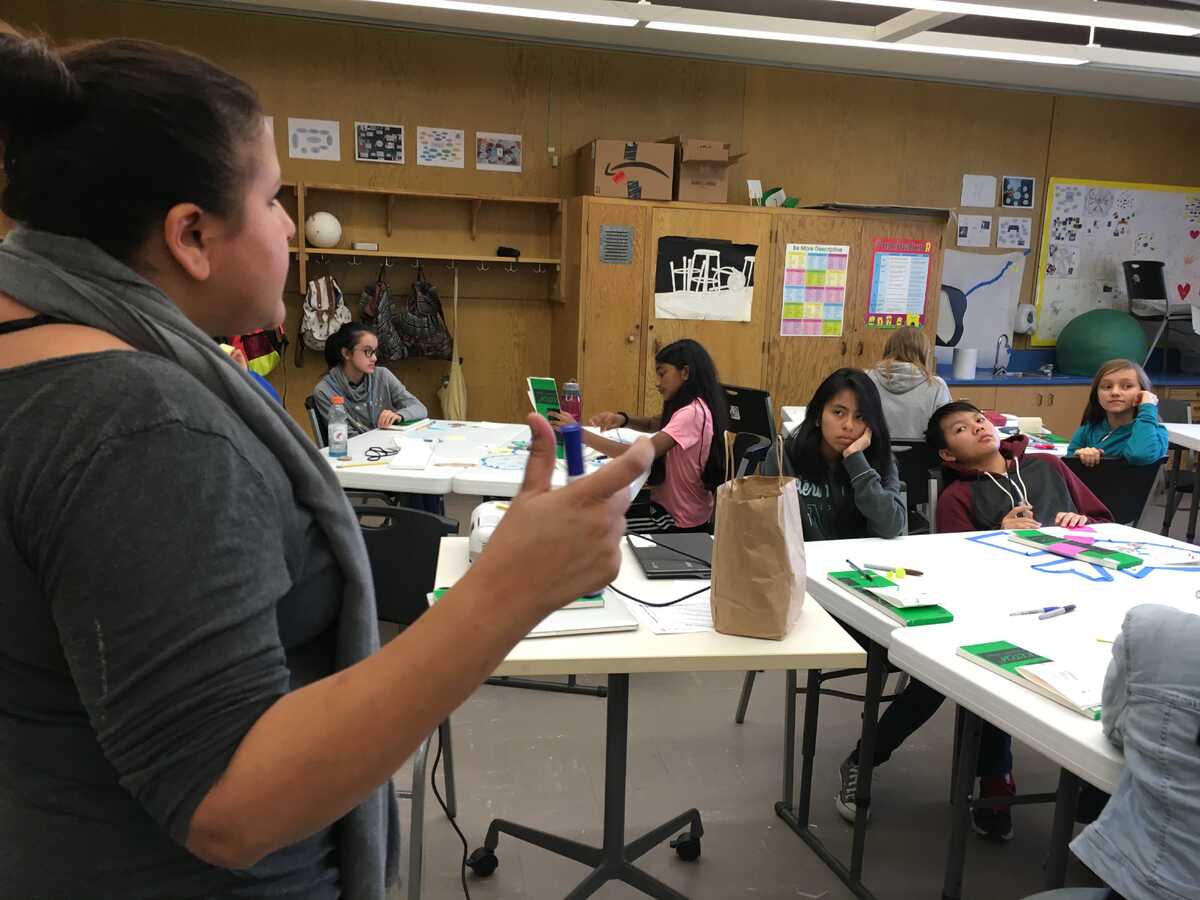
Pictured, Puja teaching. Check out the kids' faces.
⁃ These kids do not want to be here. School has become a place they are forced to go to, where the goal is to please the teacher enough that they aren’t bothered and can get back to the things they want to do. It’s not an environment where they are focused on learning.
Clip #2
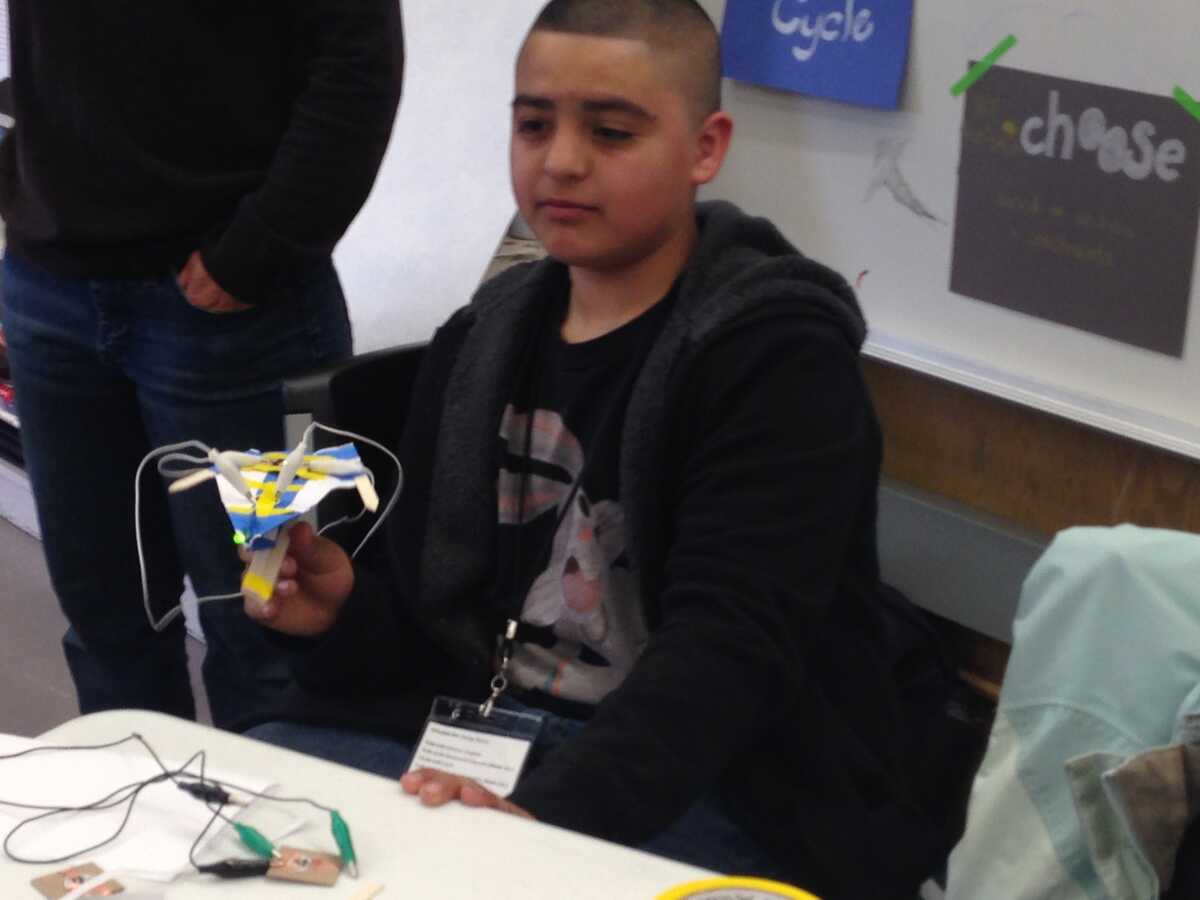
Jorge with his paper airplane.
Jorge gets a little distracted and mischievous when he’s not engaged in doing something he wants to do. He’s always looking for attention. He wrapped tape around his arm so tightly and then nagged at me to get ice to cool the burn when he took it off (“If it still hurts in 5 minutes we can get ice,” I said, so he waited and then forgot about it.)
When we checked in with him, he did not want to build a circuit. He would simply shake his head, fold his arms and say, “Nope.” I sat down at the table and started drawing Trogdor, the classic burninator from Homestar. Jorge looked over and said “WOAH! How’d you draw that?” Luckily, this is a very easy question to answer, so I told/showed him you draw two S’s, etc. etc. (I didn’t mention the consummate V’s). He started drawing his own Trogdor. He called it J’rdor; the J’s for Jorge. He made the eye light up when you touch the briefcase.
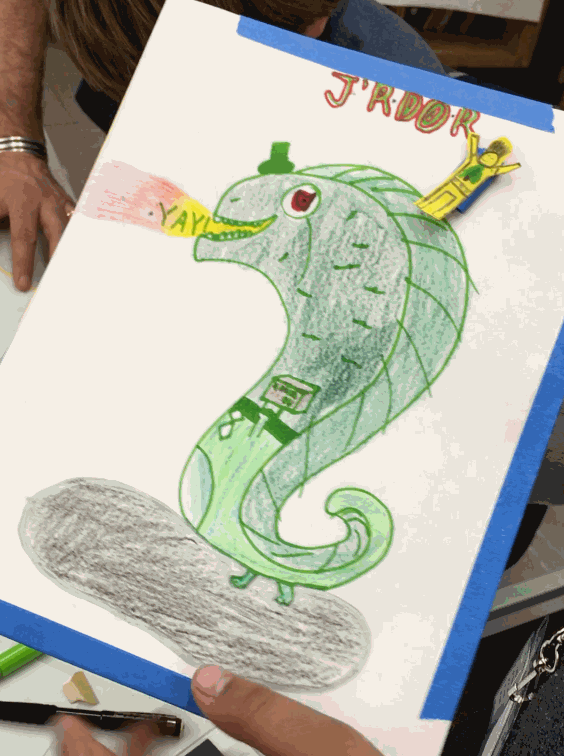
For his final project, he made another iteration of J’rdor. (On the left, he made something for his sister.) This is an extremely telling picture; the faculty told us that Jorge does get teased by the bigger kids and will lose things (or other kids will take his things), which is extremely sad. He also loves his sister, Elena, so he made one page for her; he says they’ll fly paper airplanes into the ceiling fan and watch them twirl around all day.

I found this at the end of the last day:

Clip #3
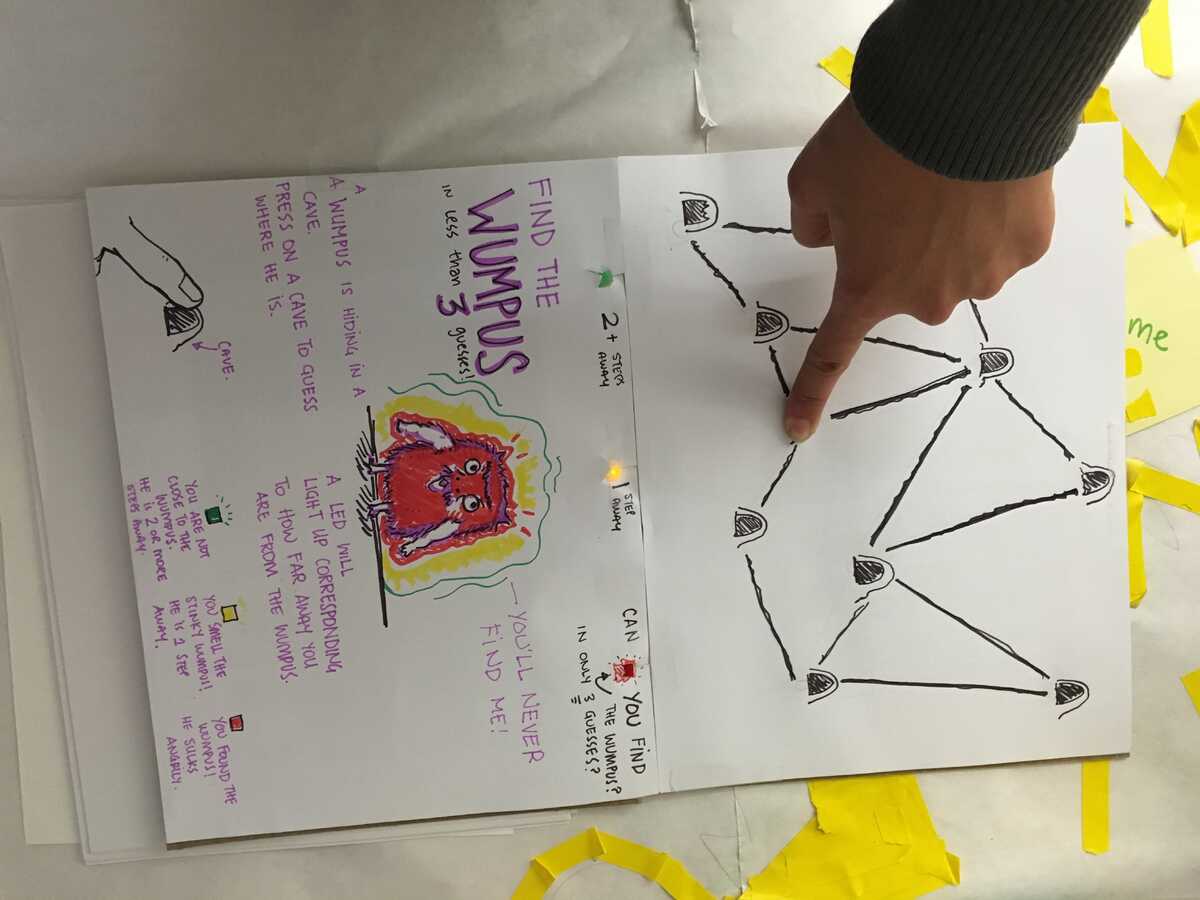
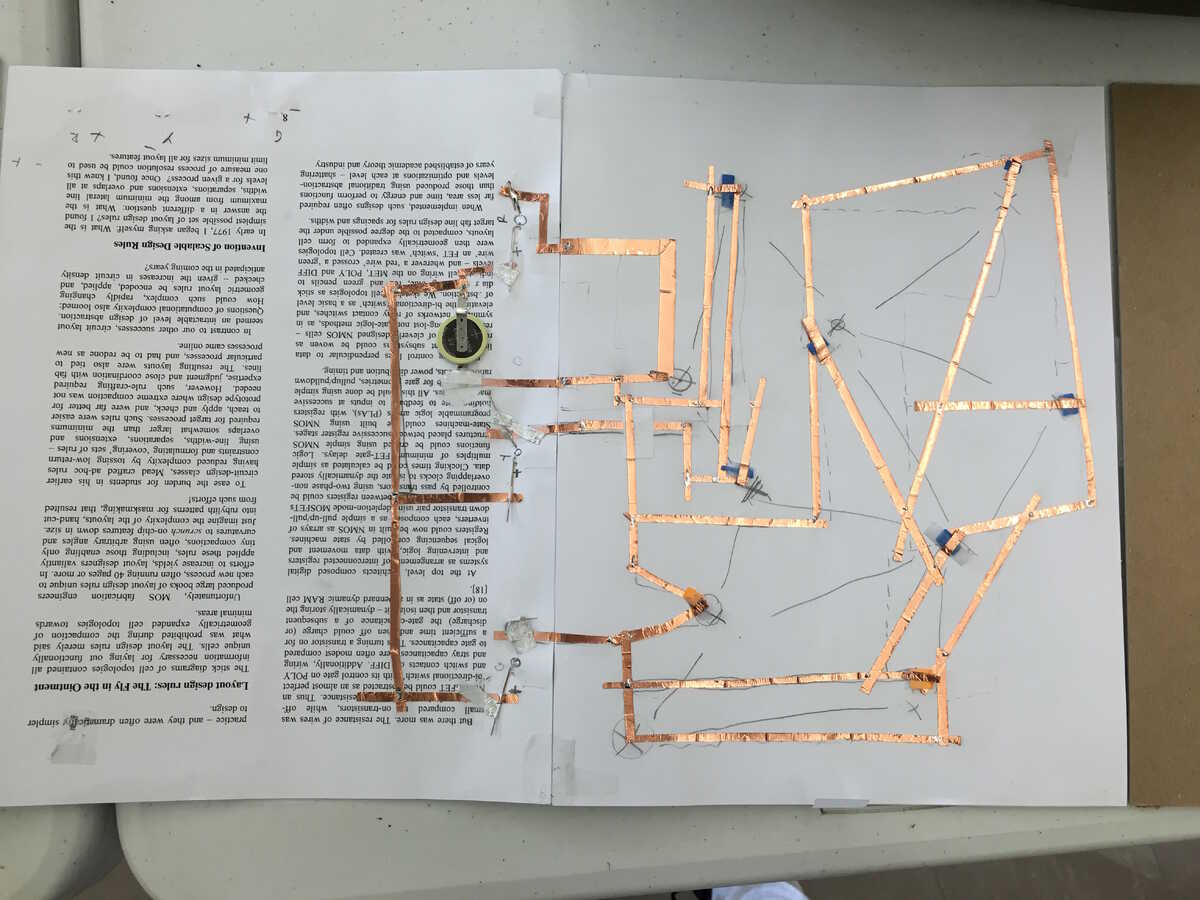
Nagle and I spent an evening making our own “Delightful experience” demo (that was the prompt for the final project) which the kids liked. It is a graph theory game about a Wumpus hiding in a cave. One useful learning from making this is that the copper tape sucks. I’ve used copper tape before, but had forgotten about this. It doesn’t always conduct on the adhesive side, so we had to solder the connections together to make things secure. After this insight, I brought my soldering iron to class. This, along with teaching kids how to use the multimeter, made the circuitry much more engaging for the kids, and got them thinking about actual principles of electron flow. Yay.